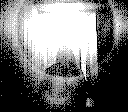CSQC (Client-Side QuakeC) is a fan-made extension to the Quake engine, allowing a separate QuakeC module to handle HUD drawing and other screen management, which is traditionally hardcoded into the engine.
The actual numbered QuakeC extensions that CSQC provides are poorly defined. At one time it seemed to cover the #300-#399 range, but this was not strictly followed and is probably no longer true.
Different engines have varying levels of CSQC support. Here is a list, ordered subjectively by "completeness":
The main vector by which CSQC is used is a separate QuakeC module compiled with
the CSQC preprocessor macro defined and the additional extensions made
available with a different "defs" file. When compiled, it should be named
csprogs.dat and placed in the game folder alongside the standard progs.dat.
CSQC is also capable of having its own set of entities, which only exist to that client. This is primarily used for drawing things like particles, sprites, complex HUD effects or anything else that other players shouldn't be able to see.
NOTE: This document is absolutely not complete, and it likely never will be. I just wanted to try and write out what I know to hopefully be useful to others.
QuakeC Entry Points
CSQC_Init
void(float apilevel, string enginename, float engineversion) CSQC_Init;
This function is called when the CSQC module is first loaded. The function arguments have no standard and may well contain anything.
CSQC_Shutdown
void() CSQC_Shutdown;
Called when the engine is shutting down or the client has been disconnected from a server. This is where you should save your persistent client settings.
CSQC_DrawHud
void(vector virtsize, float showscores) CSQC_DrawHud;
This is part of the "SimpleCSQC" subset. If the programmer does not wish to
handle drawing the full screen (or the engine does not allow that control), you
can implement this instead. virtsize is the size of the screen area in
virtual pixels, and showscores is a boolean indicating whether or not the
user is requesting to see the multiplayer scoreboard.
CSQC_DrawScores
void(vector virtsize, float showscores) CSQC_DrawScores;
This is also part of "SimpleCSQC". This will be called by the engine when the client is viewing the multiplayer scoreboard.
CSQC_UpdateView
void(float vwidth, float vheight, float notmenu) CSQC_UpdateView;
This function gives you full control over the rendered screen. vwidth is the
width of the screen in virtual pixels, and vheight is the height. notmenu
will be FALSE If the player has paused the game or is otherwise viewing an
engine-handled menu.

 2024-07-12
2024-07-12